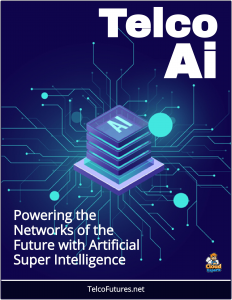Deutsche Telekom’s Kaniz Mahdi on AI in Telecom
The Telecom Infra Project has been exploring the potential of artificial intelligence (AI) in revolutionizing telecoms.
 The Telecom Infra Project (TIP) is an industry initiative that aims to accelerate innovation and improve global connectivity in the telecommunications sector.
The Telecom Infra Project (TIP) is an industry initiative that aims to accelerate innovation and improve global connectivity in the telecommunications sector.
As part of its research efforts, TIP has been exploring the potential of artificial intelligence (AI) in revolutionizing telecoms.
The Telecom Infra Project is a collaborative effort between telecom operators, infrastructure providers, system integrators, and other industry stakeholders.
Its mission is to reimagine traditional approaches to building and deploying telecom network infrastructure. As part of this mission, TIP recognizes the transformative potential of AI in telecoms.
In the feature video Kaniz Mahdi, senior VP of Technology Architecture and Innovation and Group Chief Architect at Deutsche Telekom, discusses the role and potential of artificial intelligence (AI) in the telecom sector, explains how the German operator is already putting AI to good use, and outlines how the Telecom Infra Project (TIP) is helping with the industry’s AI efforts.
Benefits of AI in Telecoms
Artificial intelligence refers to the simulation of human intelligence in machines that are programmed to think and learn like humans. In the context of telecoms, AI can be utilized to automate and optimize various processes, enhance network performance, and improve customer experience.
AI offers several benefits to the telecom industry:
- Enhanced Network Performance: AI algorithms can analyze vast amounts of network data in real-time, enabling proactive identification and resolution of network issues.
- Improved Customer Experience: AI-powered chatbots and virtual assistants can provide personalized and efficient customer support, reducing response times and enhancing satisfaction.
- Network Optimization: AI can optimize network resources, predict traffic patterns, and dynamically allocate bandwidth, leading to improved network efficiency.
- Cost Reduction: By automating routine tasks and optimizing resource allocation, AI can help telecom operators reduce operational costs.
Challenges and Considerations
While AI holds immense potential, there are several challenges and considerations to address:
- Data Privacy and Security: AI relies on vast amounts of data, raising concerns about privacy and security. Safeguarding customer data is of utmost importance.
- Ethical Use of AI: Ensuring AI is used ethically and responsibly is crucial. Transparency, fairness, and accountability should be prioritized.
- Integration with Legacy Systems: Integrating AI solutions with existing telecom infrastructure and legacy systems can be complex and require careful planning.
- Skills and Talent: Developing and maintaining AI capabilities requires skilled professionals. The industry needs to invest in training and attracting talent.
Use Cases of AI in Telecoms
AI has numerous applications in telecoms:
- Network Monitoring and Predictive Maintenance: AI algorithms can monitor network performance, detect anomalies, and predict potential failures, enabling proactive maintenance.
- Intelligent Virtual Assistants: AI-powered virtual assistants can handle customer queries, provide personalized recommendations, and assist with troubleshooting.
- Fraud Detection and Prevention: AI can analyze patterns and detect fraudulent activities, helping telecom operators prevent revenue loss.
- Network Planning and Optimization: AI can analyze historical data, predict traffic patterns, and optimize network resources to ensure efficient capacity planning.
Future of AI in Telecoms
The future of AI in telecoms is promising. As technology advances and AI capabilities mature, telecom operators can expect further advancements in areas such as:
- 5G Network Optimization: AI can play a crucial role in optimizing 5G networks, managing network slices, and ensuring efficient resource allocation.
- Edge Computing: AI at the network edge can enable real-time decision-making, reduce latency, and enhance the performance of edge computing applications.
- Network Security: AI can strengthen network security by identifying and mitigating potential threats, enhancing threat detection and response capabilities.
- Network Automation: AI-driven automation can streamline network operations, reduce manual intervention, and enable self-healing networks.



